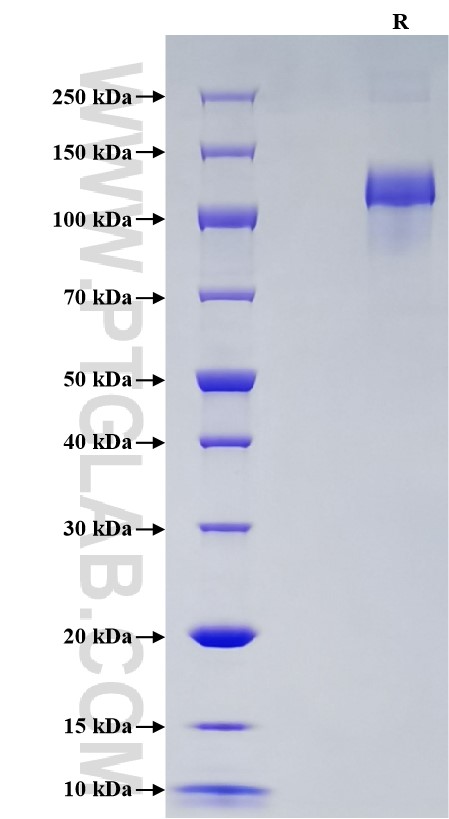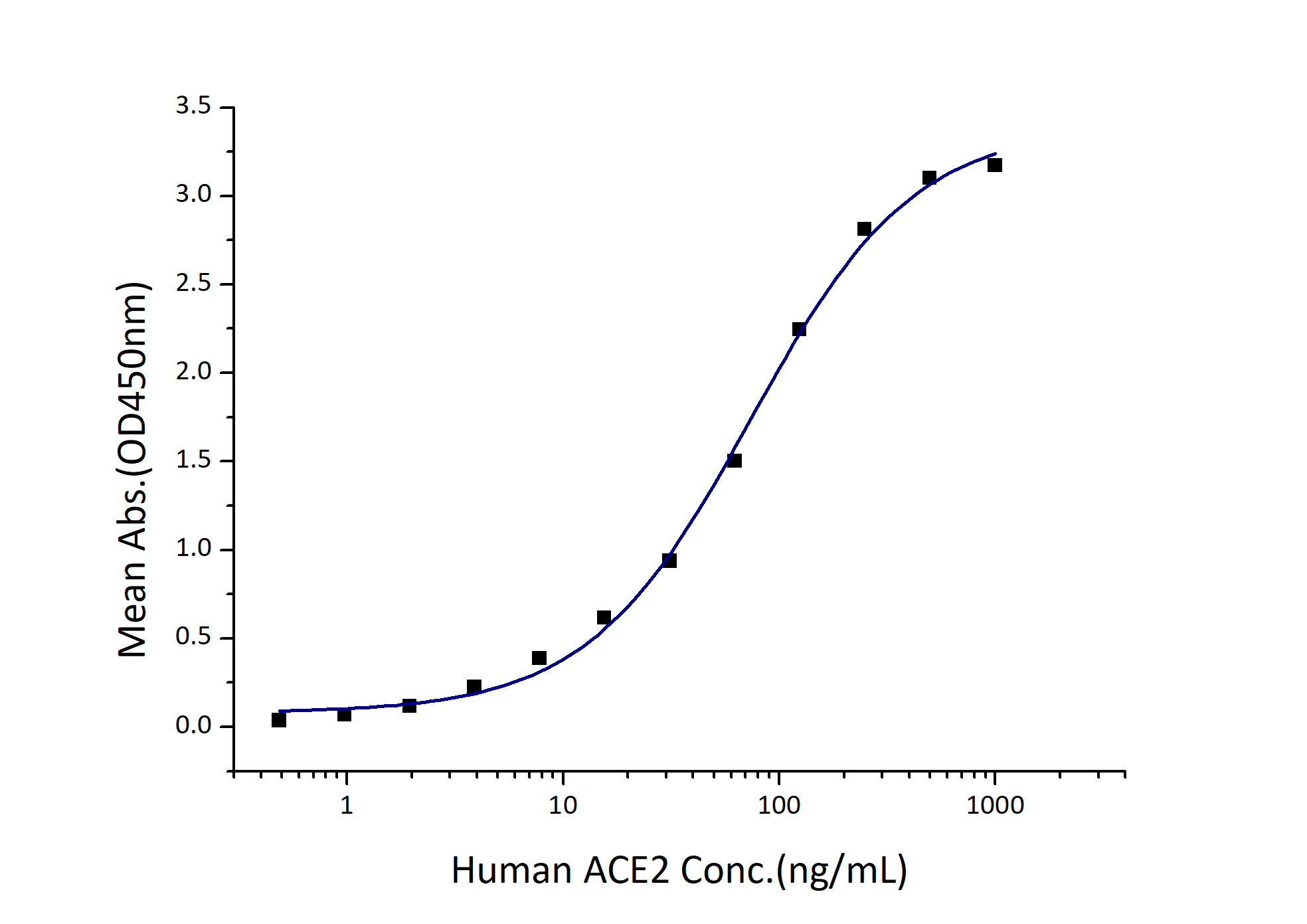Recombinant Human ACE2 protein (hFc Tag)
ED50
36-146 ng/mL
Species
Human
Purity
>90 %, SDS-PAGE
GeneID
59272
Accession
Q9BYF1
验证数据展示
Technical Specifications
| Purity | >90 %, SDS-PAGE |
| Endotoxin Level | <1.0 EU/μg protein, LAL method |
| Biological Activity |
Immobilized SARS-CoV-2 Spike RBD (Myc tag, His tag) at 2 μg/mL (100 μL/well) can bind Human ACE2 (hFc tag) with a linear range of 36-146 ng/mL. |
| Source | HEK293-derived Human ACE2 protein Gln18-Ser740 (Accession# Q9BYF1) with a human IgG1 Fc tag at the N-terminus. |
| Predicted Molecular Mass | 109.6 kDa |
| SDS-PAGE | 110-140 KDa, reducing (R) conditions |
| Formulation | Lyophilized from sterile PBS, pH 7.4. Normally 5% trehalose and 5% mannitol are added as protectants before lyophilization. |
| Reconstitution | Briefly centrifuge the tube before opening. Reconstitute at 0.1-0.5 mg/mL in sterile water. |
| Storage |
It is recommended that the protein be aliquoted for optimal storage. Avoid repeated freeze-thaw cycles.
|
| Shipping | The product is shipped at ambient temperature. Upon receipt, store it immediately at the recommended temperature. |
Background
Angiotensin-converting enzyme 2 (ACE2), a critical regulator of the renin-angiotensin system (RAS), belongs to the peptidase M2 family. It plays an important role in cardiovascular homeostasis by regulating vascular tone, fluid, and electrolyte balance. ACE2 functions as a carboxymonopeptidase hydrolyzing the cleavage of a single C-terminal residue from Angiotensin-II (Ang-II), the key peptide hormone of RAS, to form Angiotensin-(1-7) (Ang-(1-7)), which binds to the G-protein-coupled Mas receptor and activates signaling pathways that counteract the pathways activated by Ang-II. ACE2 is expressed in a variety of tissues, including the kidneys, testes, heart, and intestines, and is particularly enriched in lung epithelium. Recent studies have shown that increased ACE2 expression is likely to help prevent secondary fibrosis changes following COVID-19 pneumonia.
References:
1. Li Q. et al. (2020). Clin Sci (Lond). 134:2581-2595. 2. Li Y. et al. (2020). Biochem Biophys Res Commun. 526:947-952. 3. Hikmet F. et al. (2020). Mol Syst Biol. 16:e9610. 4. Chaudhry F. et al. (2020). Open Heart. 7:e001424.

